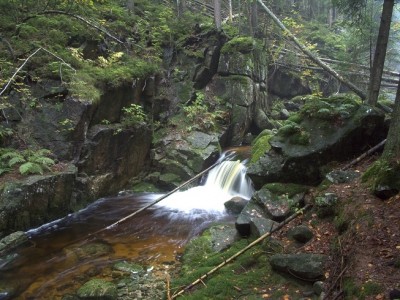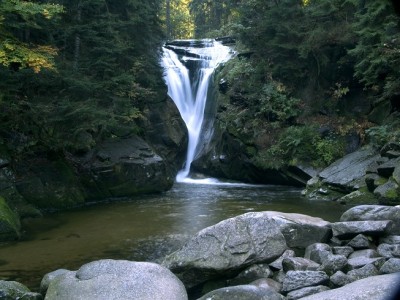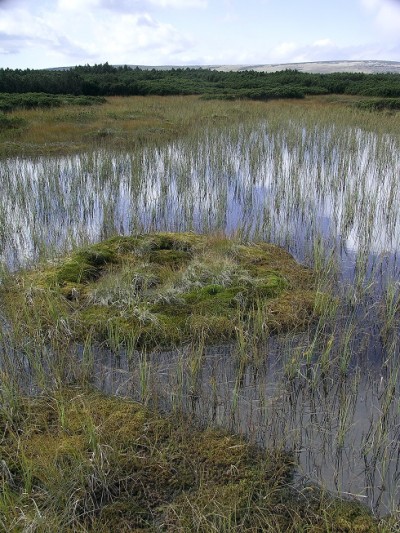Waters of the Karkonosze Mountains
Water environment in the Giant Mountains contains three different types: running water, standing water and peatbogs. The water resources of the Giant Mountains are quite large and the hydrographic network is significantly extensive. The main ridge of the Karkonosze runs through the European water line, which bounds the Elbe and Odra river basins and separates the catchment areas of the Baltic Sea and the North Sea. The area of the Karkonosze National Park is drained primarily by two basins of the Bobr River’s left tributaries - Kamienna and Łomnica.
Running water
Slope streams are the most numerous among the mountain streams in the Giant Mountains. They form a network of tributaries of the larger streams, eventually forming the upper, source-run sections of the main streams. During dry weather periods those streams are supplied with groundwater. Trough are not large by size and changes within its shapes are made easily by the interaction of natural and artificial factors.
Intermittent streams - trace of their flow runs underground through the rugged rocky slope, until the slope conditions change so the water escapes gradually to the surface – forming regular watercourses. The flow of water in those streams is unrestricted and has a turbulent character. Their depth varies and changes as they move downward. Those streams are generally fairly short and are small stretches of longer streams.
Valley streams - streams flowing through the bottoms of geologically well-established valley bottoms. Their channels are unstable and are often displaced in the narrow valley floor. Valley streams consist mostly of those of higher levels, absorbing quite a large number of tributaries. They are characterized by relatively large flows. In dry periods, they remain supplied with underground waters. Troughs are stony and of the strong turbulent water movement.
Valley-gully streams - streams of this kind flow deep in the valleys of the gorges. They consist of sections of valley streams in areas that are conducive to intensive erosion. Their troughs are fairly stable thus are not subject to the significant shifts. The flow of water in the troughs is again – turbulent and the turbulence increases as the flow increases. These streams are predominate in higher tide streams with relatively large average flows. Under dry conditions, they exhibit relative drainage stability.





 Public Information Bulletin
Public Information Bulletin





